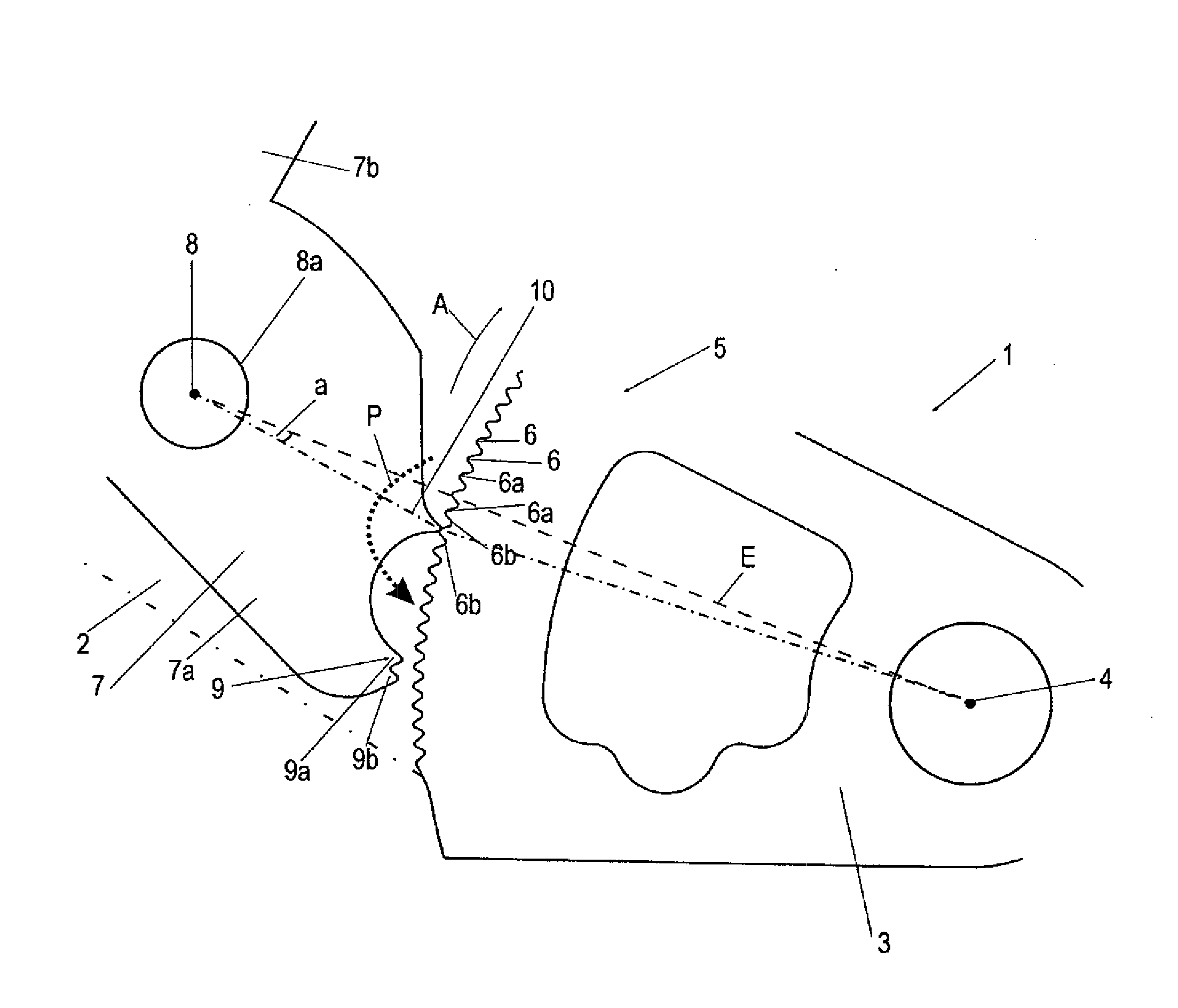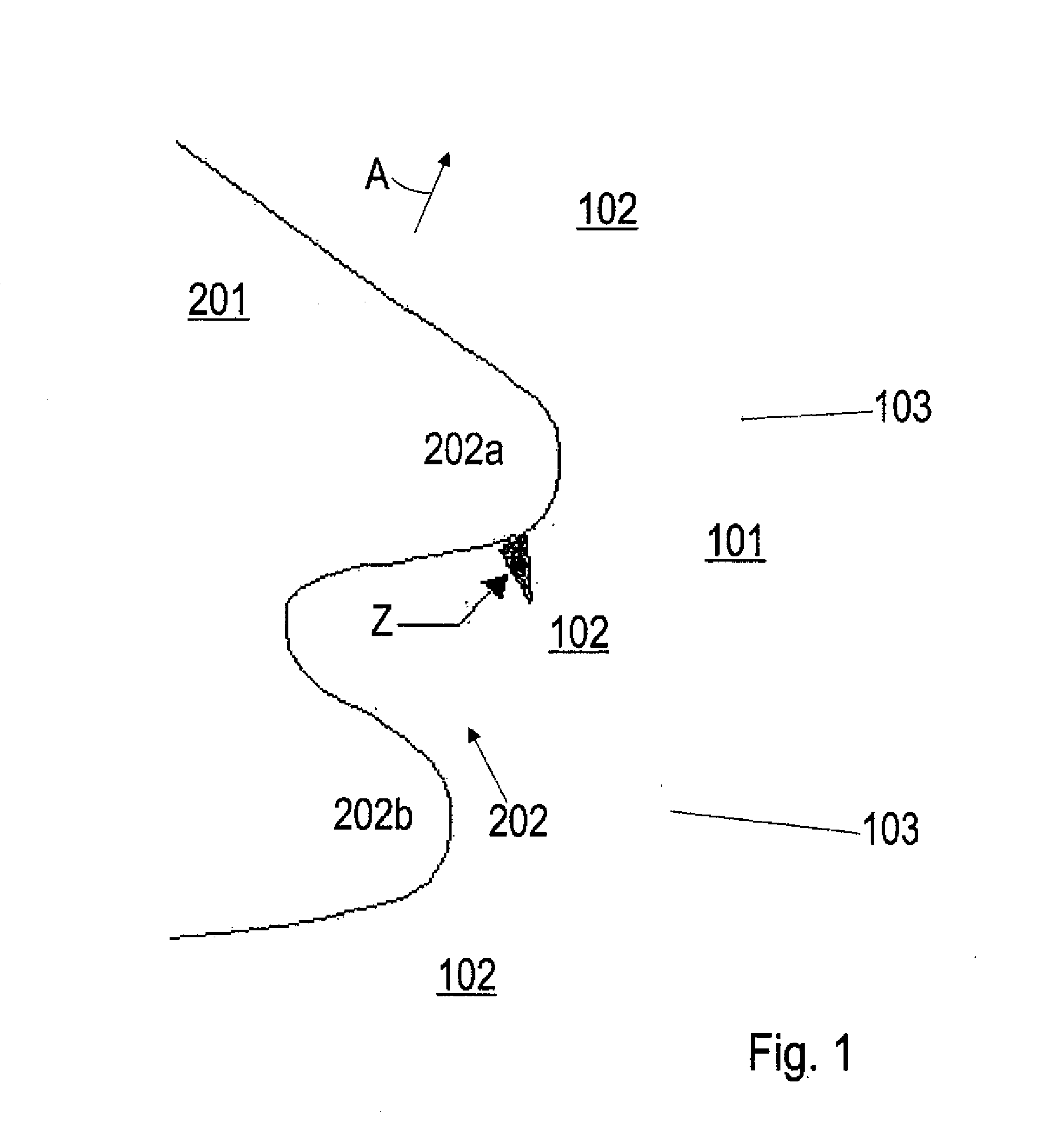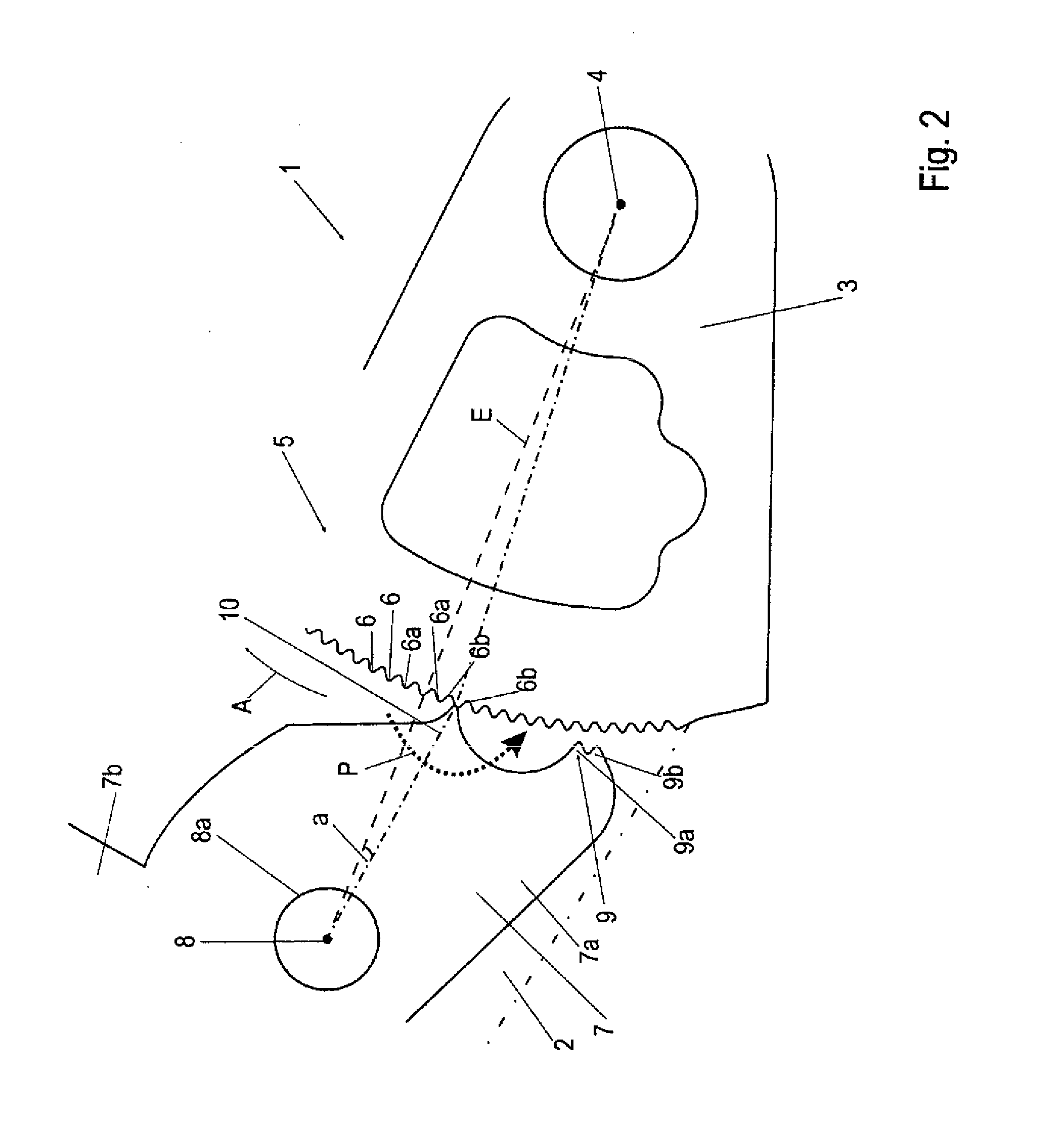Locking arrangement for a parking brake
a technology for locking arrangements and parking brakes, which is applied in the direction of mechanical control devices, controlling members, limiting/preventing/returning parts movement, etc., can solve the problems of required play and no longer secured parking brakes
- Summary
- Abstract
- Description
- Claims
- Application Information
AI Technical Summary
Benefits of technology
Problems solved by technology
Method used
Image
Examples
Embodiment Construction
[0030]FIG. 1 illustrates the case where “half-locking” occurs, in which the engaging nose of a locking catch adopts only a metastable position in relation to a tooth system and there is a risk that it will slide off as a result of a shock. The tooth system 101 has a plurality of teeth 102 and has a profile of the approximately circular segment type, a tooth recess 103 being provided between adjacent teeth 102. When the parking brake is applied, a catch 201 is pivoted in the direction of arrow A until the brake actuating lever is lowered. In the illustrative embodiment shown, the catch 201 has an engaging nose 202 designed as a double tooth, with an upper tooth 202a and a lower tooth 202b. In order to achieve reliable locking, it is expected that the teeth 202a, 202b of the engaging nose 202 will enter the respective recesses 103 between adjacent teeth 102 of the tooth system 101. The parking brake is then reliably locked. In the contact position illustrated in FIG. 1, in which the t...
PUM
 Login to View More
Login to View More Abstract
Description
Claims
Application Information
 Login to View More
Login to View More - R&D
- Intellectual Property
- Life Sciences
- Materials
- Tech Scout
- Unparalleled Data Quality
- Higher Quality Content
- 60% Fewer Hallucinations
Browse by: Latest US Patents, China's latest patents, Technical Efficacy Thesaurus, Application Domain, Technology Topic, Popular Technical Reports.
© 2025 PatSnap. All rights reserved.Legal|Privacy policy|Modern Slavery Act Transparency Statement|Sitemap|About US| Contact US: help@patsnap.com



